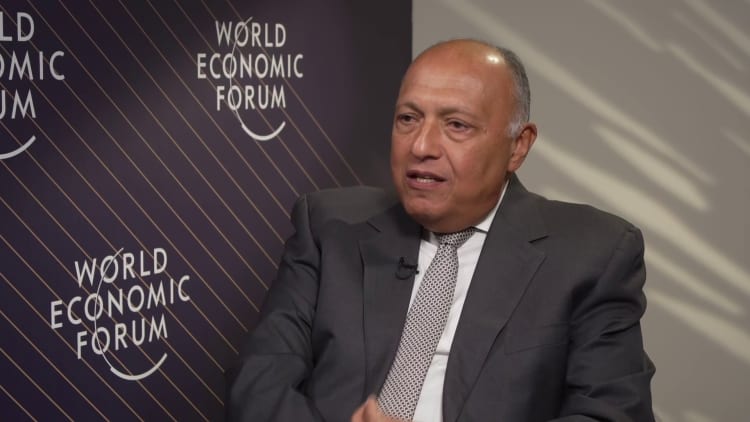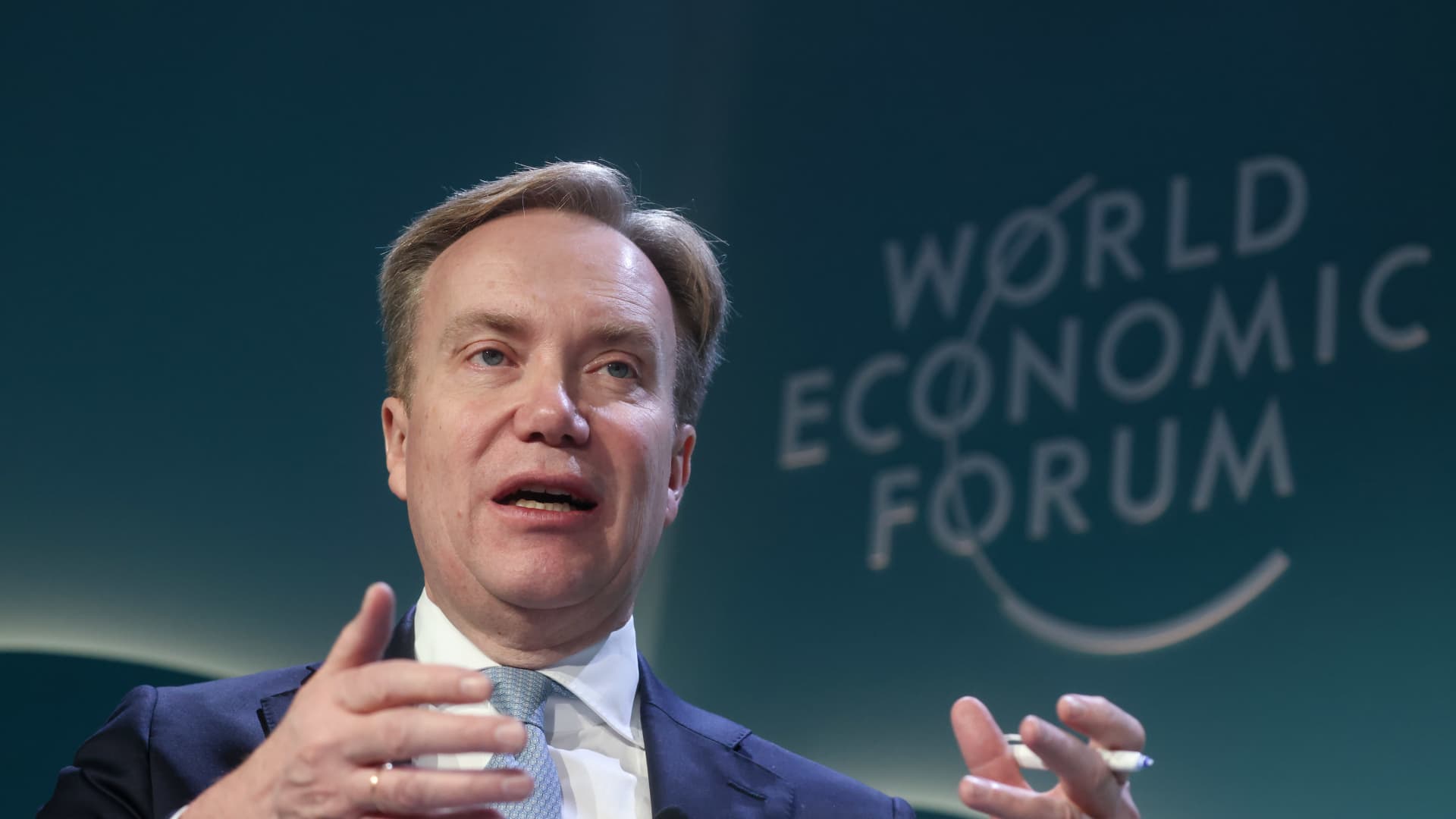Wendy’s menu boards. Ben & Jerry’s grocery store freezers. Marketing by Abercrombie & Fitch. Many cornerstones of the American customer experience are increasingly based on artificial intelligence.
The question is whether technology will actually make companies more efficient.
A rapid increase in productivity is the dream of both companies and economic policymakers. If production per hour remains constant, companies must either sacrifice profits or raise prices to finance wage increases or capital projects. But if companies figure out how to produce more per hour of work, that means they can maintain or increase their profits even if they pay or invest more. Economies experiencing a productivity boom can experience rapid wage increases and growth without as much risk of rapid inflation.
But many economists and officials seem to doubt that AI — particularly generative AI, which is still in its infancy — is widespread enough to show up in productivity data yet.
Federal Reserve Chairman Jerome H. Powell recently suggested that AI “may” have the potential to boost productivity growth, “but probably not in the short term.” John C. Williams, president of the New York Fed, has made similar comments, citing in particular the work of Northwestern University economist Robert Gordon.
Mr Gordon has argued that while new technologies have been important in recent years, they are unlikely to be sufficiently transformative to sustainably boost productivity growth.
“The enthusiasm for large language models and ChatGPT is a bit overblown,” he said in an interview.
The last time productivity really increased was in the 1990s, computer manufacturing became much more efficient, while computers themselves simultaneously made everything else more efficient – allowing for an industry-wide increase in productivity. Today’s gains may be less comprehensive, he believes.
Other economists are more optimistic. Erik Brynjolfsson of Stanford University bet Mr. Gordon $400 that productivity will rise this decade. His optimism is partly based on AI. He ran an experiment with it in a large call center, where it primarily helped less experienced employees, and co-founded a company that aims to teach companies how to use the technology.
Many companies seem to be in Mr Brynjolfsson’s camp, hoping the shiny new tool will revolutionize their workplaces. Companies are using AI and generative AI for everything from writing marketing emails to From assisting with pricing to answering staff and legal questions.
Here are some areas where companies say the latest AI technology is being used in ways that could impact productivity, according to interviews, phone calls and financial filings.
Do you have a tedious task? There is an AI for that.
Employees spend a lot of time clarifying personnel issues. Companies have invested in generative AI to answer these questions more quickly.
At Walmart, the largest retailer in the United States with 1.6 million employees, the company’s employee app has a section called “My Assistant” powered by generative AI. The feature leverages technology to quickly answer questions like “Do I have dental coverage?”, summarize meeting notes, and help write job descriptions.
Walmart rolled out the technology to its U.S. corporate employees last year.
The retailer has made it clear that the tool is intended to increase productivity. In an interview last year, Donna Morris, Walmart’s chief people officer, said one of the goals was to eliminate some mundane tasks so employees could focus on tasks with greater impact. A “tremendous increase in productivity” is expected for the company, she said.
The algorithms want to sell you things.
Macy’s CEO Tony Spring said the department store chain is experimenting with AI to customize its marketing. The company uses generative AI to write elements of emails and is exploring ways to use the technology to add product descriptions online and reproduce images of outfits or other products for sale against new backgrounds.
“It’s certainly proving to be a workload reduction tool for some colleagues,” Mr. Spring said in an interview.
Abercrombie & Fitch uses generative AI to design clothing and write descriptions for its website and app. Designers use Midjourney, an AI graphics program, to generate images while brainstorming clothing ideas. Abercrombie marketing employees also use generative AI to help write blurbs for product descriptions. (Employees edit the copy later.)
Samir Desai, Abercrombie & Fitch’s chief digital officer, said the technology helps speed up a laborious process, allowing Abercrombie and its brands to release a few hundred new products on their website in a single week.
“I think there’s a lot of confidence and belief right now that these are productivity enhancers and efficiency enhancers,” Mr. Desai said, noting that it’s difficult to quantify how much time and money has been saved. “I think we’ll see that reflected in how much work certain teams are able to handle compared to previous years.”
AI goes well with burgers and ice cream.
Some companies hope to use the latest AI technology to adjust prices based on demand, similar to how Uber sets prices for cars based on the number of people who want a ride.
Wendy’s, for example, has floated the idea of using AI to detect slower times of day and reduce the prices of menu items on its digital boards.
The technology could also help with inventory management. Ben & Jerry’s has installed cameras that use AI in grocery store freezers to alert the company when a location is running low on pints of Cherry Garcia or Chunky Monkey. The camera sporadically captures an image of the freezer shelves and the technology determines the remaining amount and sends alerts to Ben & Jerry’s parent company and its distributors.
“The software detects what is about to run out and also helps plan the most efficient routes for trucks that can replenish inventory,” Catherine Reynolds, a spokeswoman for Unilever, the parent company of Ben & Jerry’s, said in a statement .
The AI technology is installed in 8,000 freezers, and the company plans to significantly increase that number this year. On average, freezers with AI technology increased sales by 13 percent because they were restocked with fresh pints of ice cream, particularly in the most sought-after flavors, Ms. Reynolds said.
AI is getting into the weeds.
Deere and Company, the agricultural equipment manufacturer, is using artificial intelligence alongside cameras to improve herbicide sprayers. The device specifically detects weeds and combats them, which enables more precise use of chemicals. The technology was first introduced in 2022 and the company estimates it covered 100 million acres and saved 8 million gallons of herbicide last year.
The technology can allow customers to “reduce their herbicide use, lower their costs and minimize the impact on their crops and land,” John C. May II, the company’s chief executive, said at a press conference in February.
Are these groundbreaking improvements?
Much of the skepticism about AI’s potential for big change comes from the fact that many of its applications mimic things that software can already do: there are clear improvements, but not necessarily groundbreaking ones.
While it may take some time for companies to fully embrace AI tools, the fact that the applications may be so broad has made some economists optimistic about what the new technologies could mean for productivity growth.
Analysts at Vanguard believe AI could be “transformative” for the U.S. economy in the second half of the 2020s, said Joseph Davis, the financial firm’s chief global economist. He said the technology could save workers significant time in about 80 percent of jobs – perhaps 20 percent.
“We don’t see it in the data yet,” he said, explaining that he believes the recent increase in productivity is more of a recovery after a sharp decline during the pandemic. “The good news is that another wave is coming.”
Source link
2024-04-01 16:56:47
www.nytimes.com










